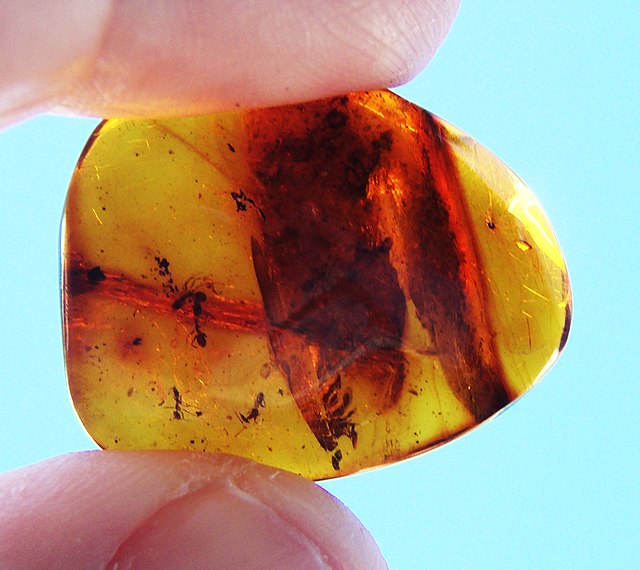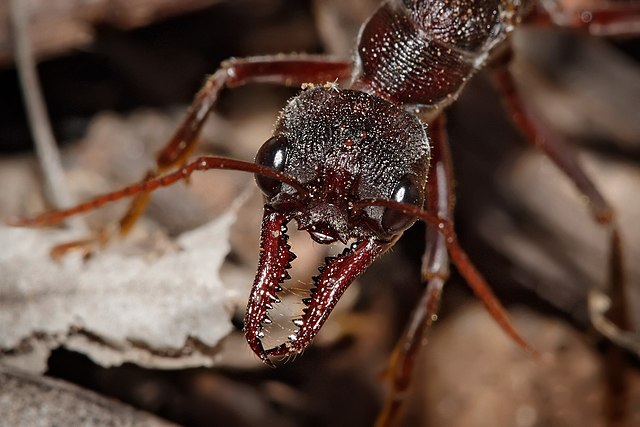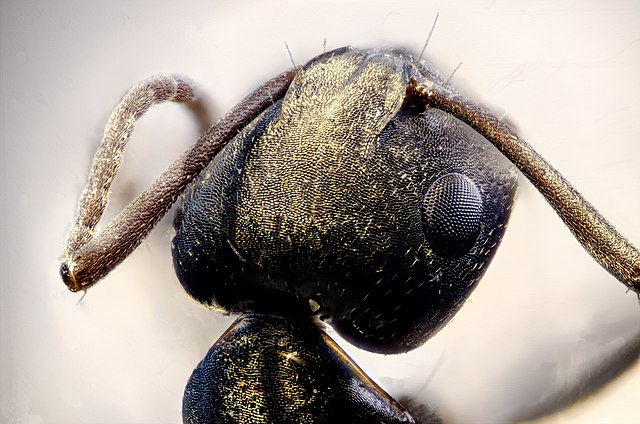Ants are eusocial insects of the family Formicidae and, along with the related wasps and bees, belong to the order Hymenoptera. Ants evolved from vespoid wasp ancestors in the Cretaceous period. More than 13,800 of an estimated total of 22,000 species have been classified. They are easily identified by their geniculate (elbowed) antennae and the distinctive node-like structure that forms their slender waists.
Ant
Ants fossilised in Baltic amber
Bull ant showing the powerful mandibles and the relatively large compound eyes that provide excellent vision
Ant head
Eusociality is the highest level of organization of sociality. It is defined by the following characteristics: cooperative brood care, overlapping generations within a colony of adults, and a division of labor into reproductive and non-reproductive groups. The division of labor creates specialized behavioral groups within an animal society which are sometimes referred to as 'castes'. Eusociality is distinguished from all other social systems because individuals of at least one caste usually lose the ability to perform behaviors characteristic of individuals in another caste. Eusocial colonies can be viewed as superorganisms.
Co-operative brood rearing, seen here in honeybees, is a condition of eusociality.
Suzanne Batra introduced the term "eusocial" after studying nesting in Halictid bees including Halictus latisignatus, pictured.
Weaver ants, here collaborating to pull nest leaves together, can be considered eusocial, as they have a permanent division of labor.
Swarming Iridomyrmex purpureus ants. The young queens are black, winged, and much larger than the wingless workers.








